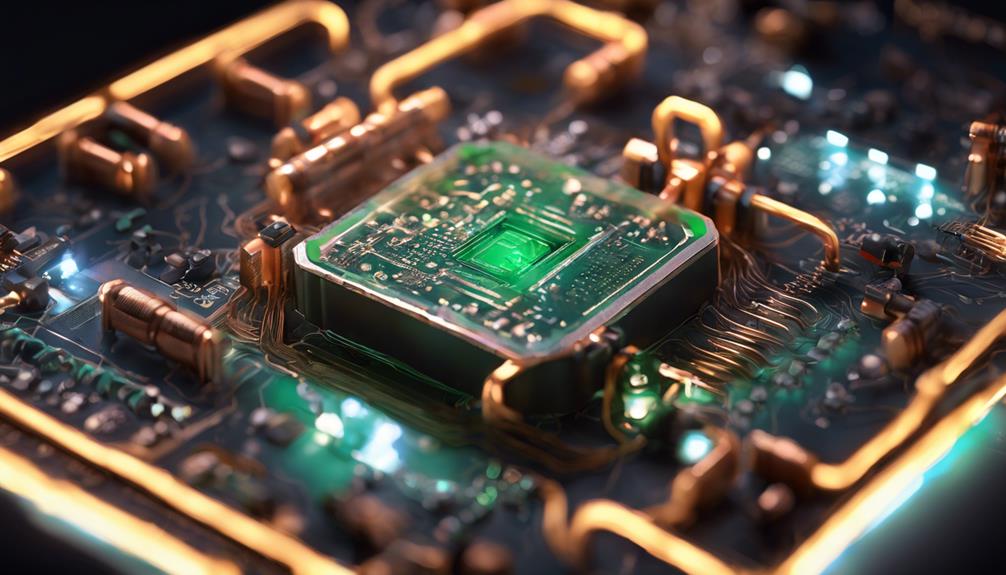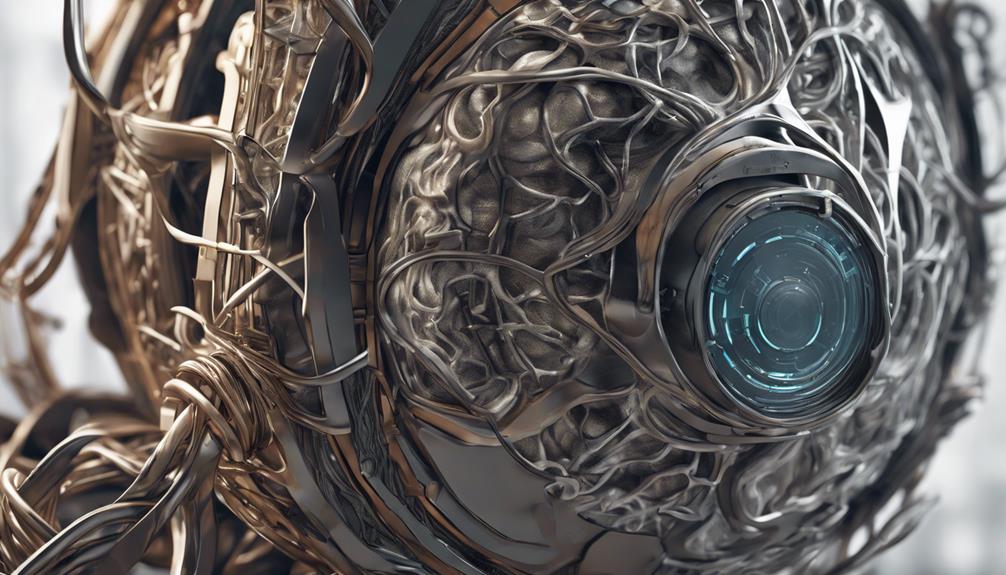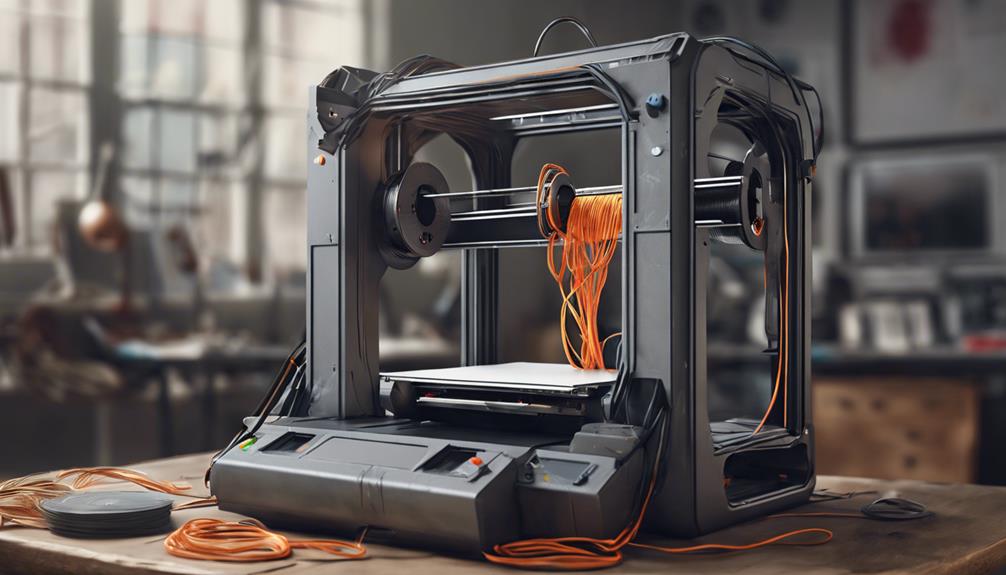As we explore the domain of conductive 3D filaments, a world of innovation and possibility unfolds. The fusion of traditional PLA filaments with conductivity introduces a new dimension to 3D printing, offering a gateway to unparalleled creativity and functionality. From touch-sensitive surfaces to custom electromagnetic components, the applications seem boundless. However, amidst the promises lie challenges to navigate. Join this exploration into the promising yet intricate universe of conductive 3D filaments, where each layer unravels new potentials for technology and design.
Conductivity Properties of PLA Filament

In the realm of 3D printing materials, the conductivity properties of PLA filament play a crucial role in determining its suitability for electrical applications. PLA filament is inherently non-conductive with a resistivity of 10 Ωm, making it an effective electrical insulator in its solid state.
However, when heated above its transformation temperature of 70°C, PLA softens, becoming conductive and unsuitable for insulation purposes. This characteristic makes PLA filament safe for low-voltage, low-heat applications but not recommended for scenarios involving high temperatures.
Additionally, PLA is biodegradable and serves as an excellent insulator up to 70°C, comparable to LDPE, making it a versatile option for various 3D printing projects with specific electrical requirements.
Popular Conductive Filaments in Market
Conductive filaments with enhanced properties and conductivity additives are increasingly gaining traction in the market for specialized 3D printing applications. Among the popular choices, Protopasta's Conductive PLA stands out with a resistivity of 15Ωcm. These filaments typically incorporate additives like graphene to boost conductivity.
While they are suitable for low-voltage circuits and simple projects, they may not be ideal for complex circuitry due to varying conductivity along different axes. Examples such as Electrifi Conductive Filament, SUNLU ABS Conductive Filament, and AMOLEN Conductive Black PLA Filament showcase the versatility of conductive filaments in creating lightweight, durable, and flexible low-voltage circuits.
Despite their limitations, these filaments offer unique opportunities for innovative 3D printing projects.
Key Characteristics of Conductive Filaments

With the increasing demand for specialized 3D printing applications, understanding the key characteristics of conductive filaments is essential for successful project implementation. Conductive filaments exhibit varying resistivity levels, necessitating thorough checks before purchase.
Additionally, these filaments showcase different conductivity along the X, Y, and Z axes, with orientation playing a significant role in enhancing conductivity. Information regarding resistivity can typically be found on the filament packaging or the manufacturer's website. Proper orientation during printing is vital to guarantee peak conductivity.
Practical Applications of Conductive Filaments
Utilizing conductive filaments in 3D printing projects opens up a world of innovative possibilities in various industries and applications. These filaments find practical applications in creating wearable technology such as smart clothing embedded with sensors, flexible circuits for prosthetics, and custom electromagnetic components for robotics.
They are also employed in the production of touch-sensitive surfaces, capacitive touch sensors, and intricate circuit designs for educational purposes. Additionally, conductive filaments are utilized in prototyping low-voltage electronic devices, IoT gadgets, and interactive projects.
Their ability to combine structural integrity with electrical conductivity makes them ideal for a wide range of projects that require both mechanical strength and electrical connectivity.
Challenges in Using Conductive Filaments

When working with conductive filaments in 3D printing projects, users often encounter a set of challenges that demand meticulous consideration and adjustment to guarantee successful outcomes. These challenges include the risk of shorting at specific temperatures, abrasive properties affecting extruder nozzles, and nozzle clogging during printing. To overcome these obstacles, users must adjust printing settings, reduce printing speed, and increase the nozzle temperature. Despite these challenges, the unique properties of conductive filaments offer a creative edge to 3D printing projects.
| Challenge | Description | Solution |
|---|---|---|
| Shorting at high temperatures | Conductive PLA can lose its insulating properties when heated above 70°C, posing a risk of shorting. | Avoid exposing conductive PLA to temperatures above 70°C. |
| Abrasive nature on extruder nozzles | Filaments infused with carbon for conductivity can be abrasive, leading to wear and tear on the extruder nozzle. | Regularly check and replace extruder nozzles to prevent damage. |
| Nozzle clogging during printing | Conductive filaments are prone to clogging nozzles due to their additives and properties. | Adjust printing settings, reduce speed, and increase nozzle temperature to prevent clogging. |
Frequently Asked Questions
Can Conductive Filaments Be Used for High-Heat Applications?
Conductive filaments are not recommended for high-heat applications due to their conductivity. While suitable for low-voltage circuits, they may lose insulating properties at elevated temperatures. Conductive PLA, for example, can short at 70°C.
How Does Filament Orientation Impact Conductivity?
Filament orientation impacts conductivity in 3D printing. Varying conductivity along X, Y, and Z axes influences the flow of electricity. Conductive prints benefit from increased contact surface, affecting the overall conductivity of the final product.
Are There Safety Precautions When Using Conductive Filaments?
When using conductive filaments, safety precautions are vital. Avoid high-heat applications to prevent shorting and maintain insulation properties. Be mindful of nozzle abrasion with carbon-infused filaments. Adjust printing settings to prevent clogging and guarantee safe, successful prints.
What Are the Limitations of Conductive Filaments in Circuit Design?
The limitations of conductive filaments in circuit design include their restricted application to low-voltage circuits, susceptibility to shorting at high temperatures, and limited conductivity along different axes. These filaments are not suitable for high-heat or high-voltage scenarios.
How Can Conductivity of 3D Printed Objects Be Tested Accurately?
Testing the conductivity of 3D printed objects accurately involves utilizing multimeter probes to measure resistance across various points of the object. Consistent measurements and comparing results to known values guarantee proper evaluation of conductivity.
Conclusion
To sum up, the domain of conductive 3D filaments offers a transformative journey from traditional PLA filament to a world of unique electrical properties. Despite challenges like nozzle clogging, the creative potential of these filaments is boundless.
From touch-sensitive surfaces to custom electromagnetic components, the applications are diverse and innovative. The world of conductive filaments reveals a landscape where imagination meets technology, paving the way for groundbreaking advancements in various fields.